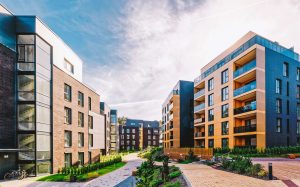
When developing a residential complex, you’d want to dedicate as much square footage to living space. However, the COVID-19 pandemic has shown how much people clamor for fitness centers within their residential buildings.
Today, having a fitness center in your building shouldn’t be an after-thought, but instead, an essential amenity. Likewise, the facility should deliver a premium fitness experience to residents. So, here’s what you should keep in mind when creating fitness centers for multifamily complexes.
Consider Residents’ Needs
Residents expect a lot from multifamily fitness facilities, so as the property owner/manager, you should be ready to meet those expectations. Typically, an apartment community offers multiple amenities to remain competitive and also appeal to residents. Fitness centers are no exception.
When incorporating a multifamily fitness facility into your apartment building, it’s best to consider what residents need. In this regard, you may want to offer 24-hour secure access to the facility, brand-name exercise machines, elements such as yoga and meditation studios, and on-demand fitness classes.
When moving into a residential building, Gen Z renters often cite a well-equipped gym as a crucial health and fitness expectation. Hence if you offer the bare minimum as well as premium amenities such as dietary classes, mediation sessions, and even Zumba, the fitness facility will be the main attraction in your building. It will help you to attract and keep renters on the building.
It’s equally essential to ensure that the exercise machines in the fitness center are functional and allow gym-goers to perform app-based workouts. Also, follow the CDC’s guidelines for keeping fitness facilities in multifamily complexes safe.
Optimize Zoning
You shouldn’t see your fitness center as a step-down from traditional gyms. Instead, design it to rival what residents would find in a conventional gym. Therefore, create a space that offers high-intensity training. An easy way to do that is by optimizing zoning.
This implies lumping areas of strength, core, cardiovascular, functional, and strength training. For instance, you may want to install rigged stations such as punching bags to allow multiple users to engage in various activities that utilize body weight. Zoning the space makes it more functional, besides enabling clients to track their workouts.
Space Out
A cramped fitness center in your building will look and feel like an after-thought, regardless of how well-equipped it is. The high-impact workouts that happen in a gym require space and plenty of it. Thus, it’s best to design your facility to accommodate residents’ exercise demands while offering them enough space to do so.
Fitness centers for multifamily complexes should be about movement, meaning, and connection. There’s no better way to achieve that than offering clients as much space as possible. A spacious and comfortable gym allows clients to easily access and use the equipment, thus enhancing their overall workout experience.
Key Takeaways
Today’s renters look for buildings with communities that integrate into their lives and their favorite things. They also look forward to fitness centers that provide them with a safe and convenient way to exercise. So, it’s best to ensure that the fitness center in your multifamily complex appeals to residents and keeps them from patronizing off-site gyms.
